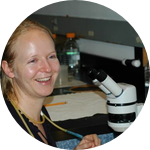Project Results
About This Project
The Acropora-eating flatworm is a destructive predator of Acropora corals in aquariums. This research aims to uncover some key questions on the life cycle of this polyclad flatworm in order to develop a scientifically-based protocol for its control.
Ask the Scientists
Join The DiscussionWhat is the context of this research?
The Acropora-eating flatworm (AEFW) is new to science but it has been a significant pest to the marine aquarium community for over a decade. Found in reef tanks around the world, it can rapidly eat and destroy valuable Acropora corals. In order to control this pest we aim to answer some fundamental questions about its life cycle.
1. How long does it take for the eggs to hatch?
2. Do they hatch as larvae or juveniles, or both?
3. How long does it take for the worms to reach sexual maturity?
4. How long can the newly hatched worms survive without food?
5. How long can the adults survive without food?
What is the significance of this project?
Acropora corals are among the most popular corals collected for the aquarium trade and the growing trade of cultivated corals is beginning to relieve the pressures that coral collection has placed on wild stocks. The Acropora-eating flatworm (AEFW) is perfectly camouflaged against the coral, because of this they are easily introduced into reef tanks, where they have devastating consequences for the corals. Understanding its life cycle is key to controlling populations and mitigating their impact. This research therefore is important for coral husbandry and conservation.
What are the goals of the project?
Using data from the life cycle experiments we will develop a protocol on how to control AEFW infestations.
The next step will be to build on the life cycle experiments to find ways to control them in-tank without having to remove the corals and put them through series of chemical dips.
We will also sequence the transcriptome of the AEFW to identify the genes that are regulating the metabolism and development of this animal, and which could provide putative targets for in-tank treatments (i.e. using reagents that can target and disrupt the activity of AEFW-specific genes).
Budget
This research will be performed in Houston, Texas in collaboration with Cat Dybala (president of the Marine Aquarium and Reef Society of Houston- MARSH) who has set up dedicated tank systems for the study of the Acropora-eating flatworm. We will use the funds raised through Microryza to cover the costs of equipment and consumables for the experiments: tanks, corals, chemical reagents, and overheads. This money will also fund a return airfare to Houston, accommodation and car rental.
Meet the Team
Affiliates
Team Bio
Dr Jessica Goodheart (University of California, Santa Barbara)
"I am a marine biologist studying flatworm and nudibranch evolution. My
familiarity with genomics and interest in marine invertebrates recently
brought about a collaboration on polyclad flatworms. Through this
research, we now have genomic data for AEFW that we can use to search for
specific genes that could be used as targets for in-tank treatments to
control this economically and environmentally important predator."
Kate Rawlinson
I am a biologist researching flatworms. The Acropora-eating flatworm (AEFW) was bought to my attention in 2009 and we have since described it as a new species. Collaborating with coral aquarists is helping advance our understanding of the biology of these ecologically and economically important worms. We aim to use carry out experiments to develop strategies to effectively manage (and prevent) AEFW infestations.
Cat Dybala
I am an avid reef hobbyist. I've been keeping aquariums for over 5 years and am the current president of the Marine Aquarium and Reef Society of Houston (MARSH). I currently keep a 150 gallon LPS and SPS reef and a 90 gallon tank dedicated to macroalgae. Some of my key interests include marine fish breeding, captive growth and propagation of corals, DIY projects of any kind, and the collection of rare macroalgae. I am also a professional photographer and photographic artist.
Press and Media
- Check out this interview from www.mrsaltwatertank.com!
- ABC Science online: http://www.abc.net.au/science/articles/2012/08/02/3557563.htm
- Dalhousie University news: http://www.dal.ca/news/2012/08/02/dalhousie-researcher-discovers-elusive-coral-predator-in-the-wil.html
Additional Information
Rawlinson KA and Stella JS (2012) Discovery of the Corallivorous Polyclad Flatworm, Amakusaplana acroporae, on the Great Barrier Reef, Australia – the First Report from the Wild. PLoS ONE 7(8): e42240.http://www.plosone.org/article/info%3Adoi%2F10.137...
Rawlinson KA, Gillis JA, Billings RE, Borneman EH (2011) Taxonomy and life history of the Acropora-eating polyclad flatworm: Amakusaplana acroporae nov. sp. (Polycladida, Prosthiostomidae) Coral Reefs. 30:693-705.
Kate's flatworm research website: http://flatworm.biology.dal.ca/katerawlinson/Home....
Project Backers
- 71Backers
- 120%Funded
- $6,211Total Donations
- $87.48Average Donation

